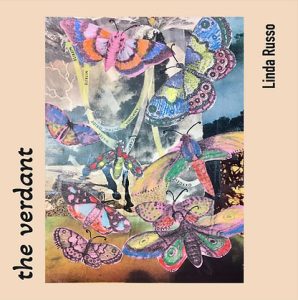The Hudson Review – Winter 2009
Volume 61 Number 4
Winter 2009
Quarterly
Sima Rabinowitz
The “translation issue” begins with a tribute to the late Hayden Carruth (1921-2008) by poet David Mason, which concludes: “I wish to remember . . . an understanding of what is centrally important in life, what is truly marginal, and how poetry unites us more than it divides us, how language touches what we love, and how the love remains.” A beautiful tribute to a fine American poet, but also a fitting introduction for considering works in translation.
The “translation issue” begins with a tribute to the late Hayden Carruth (1921-2008) by poet David Mason, which concludes: “I wish to remember . . . an understanding of what is centrally important in life, what is truly marginal, and how poetry unites us more than it divides us, how language touches what we love, and how the love remains.” A beautiful tribute to a fine American poet, but also a fitting introduction for considering works in translation.
The translations of an essay, a memoir, poetry, and fiction, both old (Corneille, Hugo) and new (Starobinski, Sedakova) are not accompanied by their originals, which can make it difficult to assess the quality of the translations, but, for the most part, the translations have a kind of natural fluidity, a sense of comfort with themselves, that can make a reader forget she is reading a translation. Mark Jarman’s essay, “Poets as translators,” is helpful, too, reminding us of that “every era needs its own translations of classical literature” and demonstrating how talented translators can “refresh” classical work.
We owe a debt of gratitude to journals that publish translations – and, of course, to translators. They offer an opportunity to discover work we would be hard pressed to know of, let alone read, otherwise. I loved poems here by Olga Sedakova, (translations by Larissa Volokhonsky and Emily Grosholz) “The Subway, Moscow,” especially. Sedakova has a wry voice, a sharp eye, a way of turning exuberance into understatement and understatement into exuberance. There is also a brief memoir by Sedakova, a short introduction useful for those of us encountering her for the first time.
Emily Grosholz has also contributed an essay on translating the work of Yves Bonnefoy and translations of Bonnefoy’s poems. Her description of the work of translation rivals the most instructive I have read:
Our art is [even more] constructed, formal repetition unifying succession, symmetry organizing the space of the page, making the poem easy to memorize and so revisit. Because our acts, memories, dreams, stories and works of art are constructed, they may also be shared. To act at all is to be able to tell a story, and storytelling is inherently a social act. A good translator, then, must reproduce not just the sense of the poem but also its music – rhythm and repetition of sound – because its immortality depends on both of them; and she must do her best to enter imaginatively into the experience of the poet, all the while respecting the ravine that separates his “je” from her “I.”
This issue also includes strong essays on dance (Marcia B. Siegel), an art exhibit (Karen Wilkin) and theater productions (Richard Hornby), as well as book reviews, some of which continue the translation theme. Reviews in this journal always have serious analysis and well-chosen examples.
I cannot conclude before recommending Mary Jane White’s exquisite translation of Marina Tsvetaeva’s “Poem of the End.” Thanks to magazines like The Hudson Review, our “end,” I hope, will be considerably different than the poem’s:
So, into the hollow waves
Of darkness – stooping and equals –
Traceless – and speechless – we go
Down, like a sinking ship.




